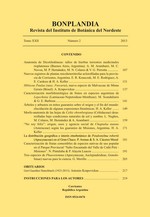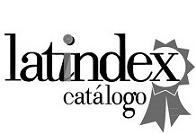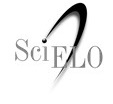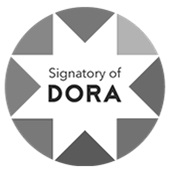Anatomía de Dicotiledóneas: tallos de hierbas terrestres medicinales rioplatenses (Buenos Aires, Argentina)
DOI:
https://doi.org/10.30972/bon.2221240Palavras-chave:
Cladodios, plantas medicinales, estructura del talloResumo
Se estudió la anatomía de los tallos de 37 hierbas terrestres pertenecientes a 19 familias usadas en la medicina popular de la región rioplatense. El objetivo fue elaborar una clave dicotómica para la determinación de los taxones a partir de los caracteres morfo-histológicos de los tallos, ya sea que este material se encuentre al estado entero o fragmentado. Se estudiaron tallos frescos y de ejemplares de herbario, mediante técnicas histológicas convencionales. Se realizó análisis histoquímico para la identificación de almidón, mucílagos, sustancias lipídicas y fenólicas. Entre los caracteres diagnóstico hallados se destacan: contorno de la sección transversal del tallo; presencia y los tipos de tricomas; posición de los estomas con respecto al nivel de las restantes células epidérmicas; presencia de hipodermis, de anillos fibrosos en la corteza y de dos ciclos vasculares en la eustela; presencia de endodermis conspicua; diferentes tipos de cristales y estructuras secretoras internas, con sustancias lipófilas, mucílagos y la presencia de almidón. Los caracteres morfo-histológicos de los tallos permitieron elaborar una clave de diferenciaciónDownloads
Não há dados estatísticos.
Downloads
Publicado
2013-07-01
Como Citar
Arambarri, A. M., Novoa, M. C., Hernández, M. P., Colares, M. N., & Perrotta, V. G. (2013). Anatomía de Dicotiledóneas: tallos de hierbas terrestres medicinales rioplatenses (Buenos Aires, Argentina). Bonplandia, 22(2), 107–130. https://doi.org/10.30972/bon.2221240
Edição
Seção
Artículos originales
Licença
Declaration of Adhesion to Open Access
- All contents of Bonplandia journal are available online, open to all and for free, before they are printed.
Copyright Notice
- Bonplandia magazine allows authors to retain their copyright without restrictions.
- The journal is under a Creative Commons Attribution 4.0 International license.















.jpg)


